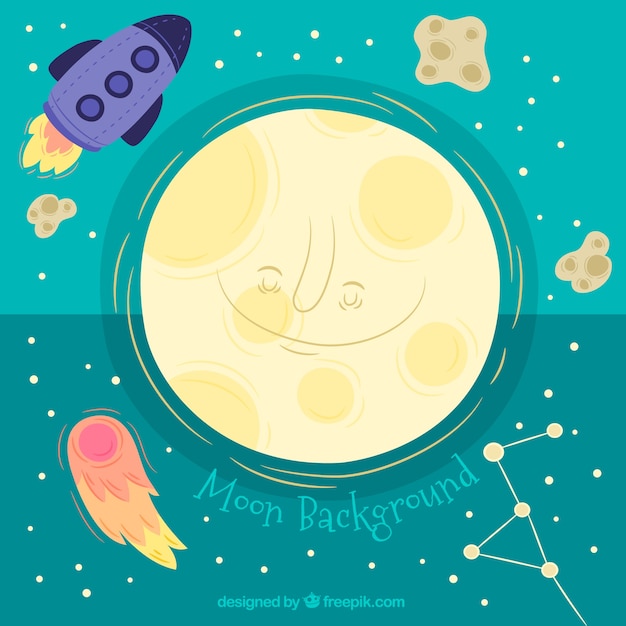Moon Facts for Kids

The moon is Earth’s only natural satellite.
The moon is about 1/6th the size of Earth.
The moon has a diameter of about 3,474 kilometers.
The moon is about 384,400 kilometers away from Earth.
The moon orbits the Earth every 27.3 days.
The moon’s gravity is about 1/6th of Earth’s gravity.
The moon has no atmosphere, which means there is no air or weather on the moon.
The moon is covered in craters, which are caused by asteroids hitting its surface.
The moon’s surface is mostly made up of rocks and dust.
The moon has different phases, such as full moon, half moon, and crescent moon.
The first person to walk on the moon was Neil Armstrong in 1969.
The moon is visible during the day sometimes.
The moon has no light of its own, it shines because it reflects the sun’s light.
The moon affects the tides on Earth due to its gravity.
The moon’s temperature can range from extremely hot to extremely cold.
There are no plants or animals living on the moon.
The moon’s gravity helps keep the Earth stable on its axis.
The moon is a source of inspiration for poets, artists, and musicians.
The moon’s surface is covered in a layer of fine dust called regolith.
The moon has many mountains and valleys.
The moon’s gravity allows astronauts to bounce around rather than walking.
The first spacecraft to land on the moon was the Soviet Union’s Luna 2 in 1959.
Moon Facts for Kids part 2
The moon is home to the Sea of Tranquility, a large area of flat terrain.
During a solar eclipse, the moon blocks the sun’s light from reaching Earth.
The moon has no sound because there is no air to carry it.
The moon’s gravity affects the growth of plants on Earth.
The moon’s color can change depending on atmospheric conditions.
The moon has been a source of fascination for humans for thousands of years.
The moon affects the sleep patterns of some animals, including humans.
The moon has a weak magnetic field.
The moon takes about 29.5 days to go through a full lunar cycle.
The moon’s gravity pulls on Earth’s oceans, causing high and low tides.
The moon has many impact craters, the largest of which is called the South Pole–Aitken basin.
The moon has been visited by astronauts from six different countries.
The moon’s gravity has caused it to become tidally locked with Earth, meaning we always see the same side.
The moon appears larger when it is close to the horizon due to an optical illusion.
The moon is the fifth largest moon in the solar system.
The moon’s surface is covered in a thin layer of dust called regolith.
The moon is a popular subject for photographers.
The moon is thought to have formed after a giant impact between Earth and a Mars-sized object.
The moon has been used as a navigational tool by sailors for centuries.
The moon’s temperature can vary from -233°C to 123°C.
The moon has no atmosphere, which means there is no wind or weather on the surface.
The moon has been studied extensively by NASA’s Apollo missions.
The moon was named after the Latin word for moon, which is luna.

